Peter Ireland – 21 June, 2016
For a number of fairly obvious reasons photography played a central and highly conspicuous part in this out of doors, street-wise, post-quake programme, the opportunity giving the medium a profile it had never enjoyed before at this particular institution, and suggested optimistically that a drought had been broken - if only there had been something beforehand that the notion of drought usually assumes. The Gallery re-opened in December last year with much fanfare and relief, but its opening exhibitions rather tended to suggest that W S Baverstock had been resurrected with it.
EyeContact Essay #14
Christchurch’s public art gallery was the last major such institution in New Zealand to begin a photography collection. In 1981 the director of the then Robert McDougall Art Gallery, painter and teacher John Coley, commissioned this writer to compose a policy for a foundation collection, and once the draft had been debated, it was formalised, accepted, and the author was invited to become the honorary curator and given a budget of $2000 annually for acquisitions and exhibitions.
Given the huge historical collection possessed by the Canterbury Museum, and for practical reasons, the new collection was focused on assembling contemporary photography from 1960.
A scheme was set in motion to approach some establishment Christchurch businesses to each sponsor the purchase of a print to form a foundation collection covering 1960-1980, a general figure of $300 being set for each image, with the modest annual budget allowing additions in succeeding years. In order to give this scheme maximum chance of success the honorary curator sought the advice of the then president of the then Canterbury Society of Arts - a body with an august history (1) - who was the city’s most prominent architect. He listened to my project with attentive interest, but when I mentioned the $300 per print he spluttered that in all his career he’d never heard of such an amount charged for a photograph. Given this intelligence it seemed wise to abandon the scheme.
Over the following two years of the honorary curator’s tenure three or four exhibitions were mounted - The Nude Exposed (2) and Now, See, Hear among them, largely composed of images from photographers’ and private collections - and a modest handful of acquisitions made, one of which was memorably written about as a revelation to a schoolboy by a later curator there, Justin Paton (3).
Opened in 1932, the old Robert McDougall Gallery in the Botanic Gardens closed in 2002, and the following year the gleaming new Christchurch Art Gallery Te Puna o Waiwhetu opened on Montreal Street between Worcester Boulevard and Gloucester Street. The only notable in-house photographic exhibition the McDougall mounted in its final two decades was a survey of the work of “Kaz”, Frank Kazukaitis, an American born in 1927 who in the late 1950s joined Operation Deep Freeze, the US’s scientific/military mission in Antarctica, its New Zealand base being Harewood in Christchurch (4).
In its first seven years of operation - before being closed after the first major quake in 2010 - the CAG hosted the usual travelling photographic exhibitions and generated two itself: one in 2004, the other in 2009. Curator Ken Hall’s excellent George D Valentine (5) show was, nonetheless, the only historical photographic exhibition the CAG has ever mounted. Neil Pardington’s The Vault of 2009 also came with a handsome publication (6). The CAG was also the solo New Zealand venue for the internationally-touring Cecil Beaton: Portraits exhibition in 2006 which, in more enlightened times, might have been seen in other venues.
In terms of the CAG’s engagement with its city and provincial constituency, the earthquakes may have been a blessing in disguise. Under Jenny Harper’s leadership as director the gallery was not only forced out of doors but, coincidentally, its street-wise programme was among the first signs of life amid the destruction, and became - along with the building’s reconstruction - perhaps the principal symbol for the city’s renewal.
For a number of fairly obvious reasons photography played a central and highly conspicuous part in this post-quake programme, the opportunity giving the medium a profile it had never enjoyed before at this particular institution, and suggested optimistically that a drought had been broken - if only there had been something beforehand that the notion of drought usually assumes. The Gallery re-opened in December last year with much fanfare and relief, but its opening exhibitions rather tended to suggest that W S Baverstock had been resurrected with it.
William Sykes Baverstock (1893-1975) was English-born and came to this country at the age of 8, spending his entire life in Christchurch. He attended the Canterbury College School of Art, and was a foundation member of The Group when it was formed in 1927. From 1943 he became secretary/treasurer of the Canterbury Society of Arts, an institution he exhibited with regularly for most of his active life as an artist. In 1949 he became honorary curator of the Robert McDougall Art Gallery, being appointed the first professional director there in 1960, serving another nine years until he was followed in 1969 by Brian Muir, who, effectively, dragged the McDougall into the 20th century (7).
Baverstock (8) was also a member of the Christchurch City Council’s Advisory Committee on Civic Beautification, one of whose roles was to approve (or otherwise) purchases for or gifts to the McDougall. In 1949, of the advice of this Committee, the City Council “respectfully declined” the offer of Frances Hodgkins’ The Pleasure Garden (c1933) which had been purchased by public subscription after the Society of Arts had deemed none of the Hodgkins’ works on offer as worthy of the city’s collection. After a great deal of heat and some light generated in the local newspapers this fairly innocuous painting was eventually accepted and remains one of the historical treasures of the CAG. This “Pleasure Garden incident” symbolically represents a triumph of radicalism over the reactionary.
The CAG’s series of re-opening exhibitions - perhaps understandably nostalgic? - could be seen almost as a triumph of the reactionary over the radical. Given photography’s sustaining role in the Gallery’s public outreach between 2010 and 2015 it seems hardly a grateful, generous or even contemporary gesture that of the 351 works in these shows, only eleven of them are photographs (9). (There are a total of fourteen Max Gimbletts.) And one of the photographs - a portrait by Marti Friedlander - is likely to be there only to ‘illustrate’ a section of seven Hoteres. Never in its admittedly short history has the CAG mounted an exhibition primarily about the medium of photography, and given the curatorial record there to date prospects seem very slim indeed.
On 11th June last Te Papa held a photography symposium, one of the participants being a curator from CAG. The day’s printed programme gave biographies of the participants, and the one from Christchurch was described thus: [he] “has developed many photographic exhibitions there, both historical and contemporary, presenting works by Ansel Adams, Ben Cauchi, Neil Pardington, Yvonne Todd, Paul Johns, David Cook, and Doc Ross. Nineteenth-century New Zealand photography remains an enduring interest.” This record was the basis of the invitation. Yet, the in CAG’s series of re-opening exhibitions, in the six shows assembled by this curator - totalling 149 works - only nine are photographs. When asked at the Te Papa symposium to perhaps shed some light on this rather extraordinary statistic he replied “I don’t know.”
Surmounting the re-opened CAG building, and illustrated on the cover of the smaller catalogue, is Martin Creed’s 2015 large neon work, Work no 2324: the text of which reads “Everything is going to be alright”. Well, maybe.
Peter Ireland
(1) Warren Feeney, The Radical, the Reactionary and the Canterbury Society of Arts, 1880-1996, Christchurch, Canterbury University Press, 2011.
(2) This exhibition attracted a noticeable increase in Gallery visits from the boys of Christ’s College, right next door.
(3) Justin Paton, ‘Living Proof’, in Aberhart, edited by Gregory O’Brien & Justin Paton, Wellingtion, Victoria University Press in association with City Gallery, Wellington, 2007.
(4) Kaz’s most memorable image perhaps, taken at Guam in 1946, was of a monkey sitting at a linotype machine’s keyboard.
(5) Ken Hall, George D Valentine: a 19th century photographer in New Zealand, Craig Potton Publishing, Nelson, 2004. This accompanying publication is a model of its kind.
(6) The Vault: Neil Pardington, essays by Ken Hall, Lara Strongman & Anna-Marie White, Christchurch, Christchurch Art Gallery in association with Eyework Art Production Ltd Wellington, 2009
(7) Much the same happened in Wellington at the supposed National Art Gallery when Stewart Maclennan was followed in 1968 by Melvin Day.
(8) There is a fine portrait of WSB by Ivy Fife in the CAG collection.
(9) Images by: Marti Friedlander, Gavin Hipkins, Paul Johns, John Johns (2), R P Moore, Fiona Pardington (2), Neil Pardington, Yvonne Todd, Tim J Veling.
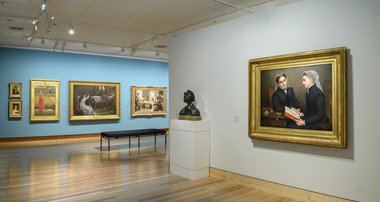
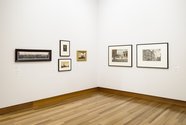
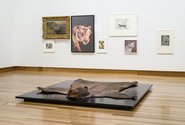
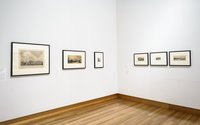
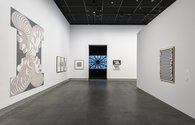
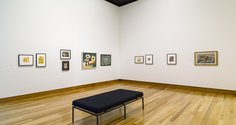
 Advertising in this column
Advertising in this column Two Rooms presents a program of residencies and projects
Two Rooms presents a program of residencies and projects



This Discussion has 0 comments.
Comment
Participate
Register to Participate.
Sign in
Sign in to an existing account.